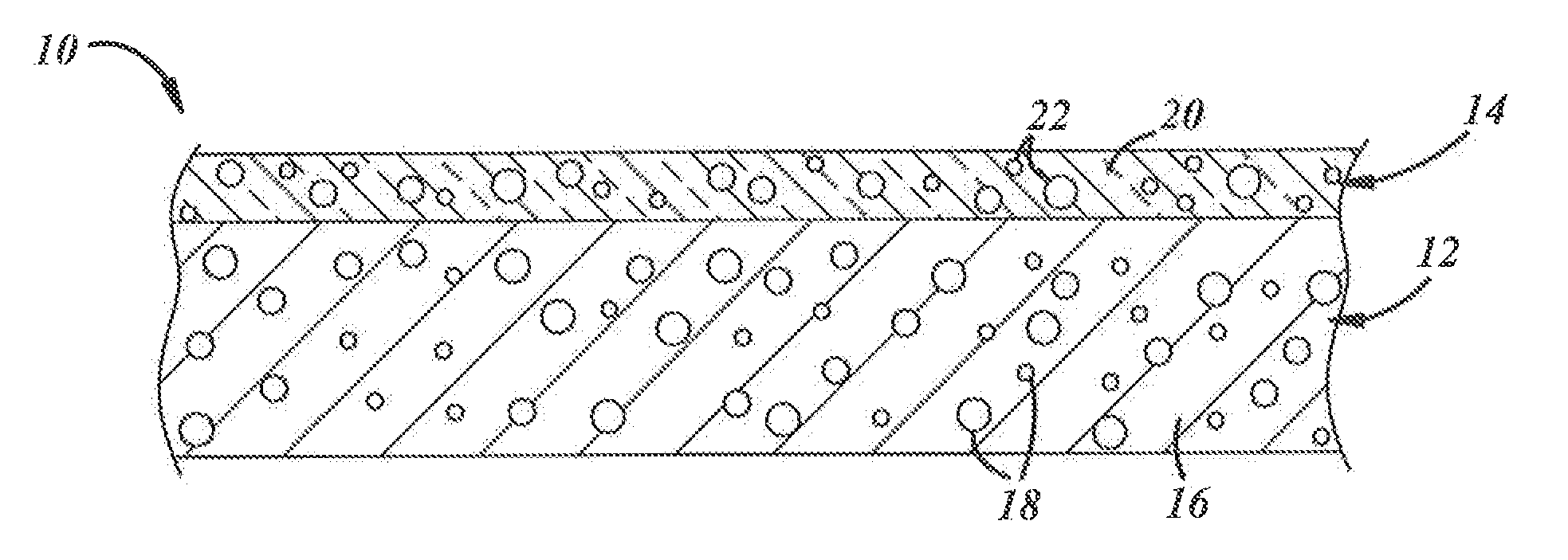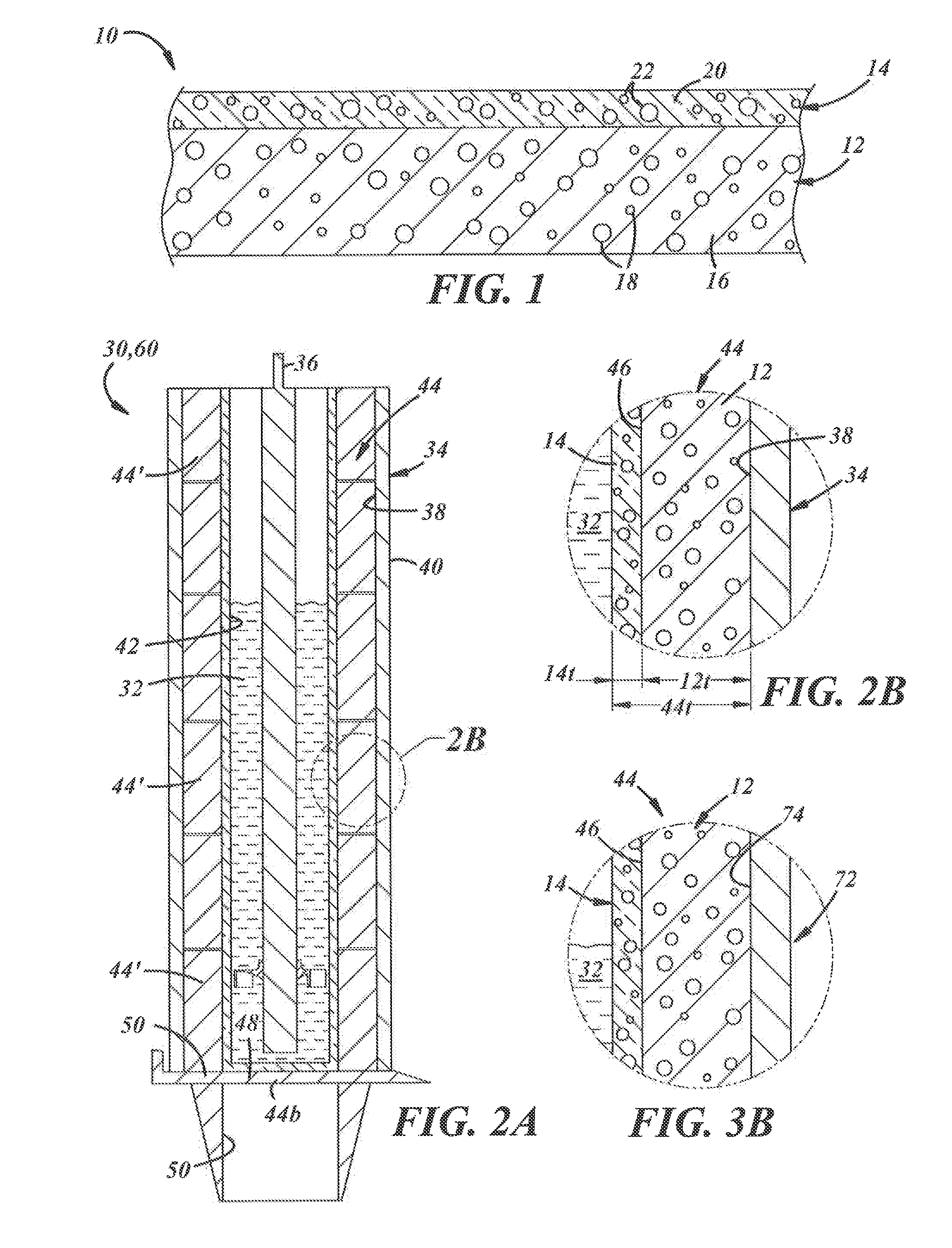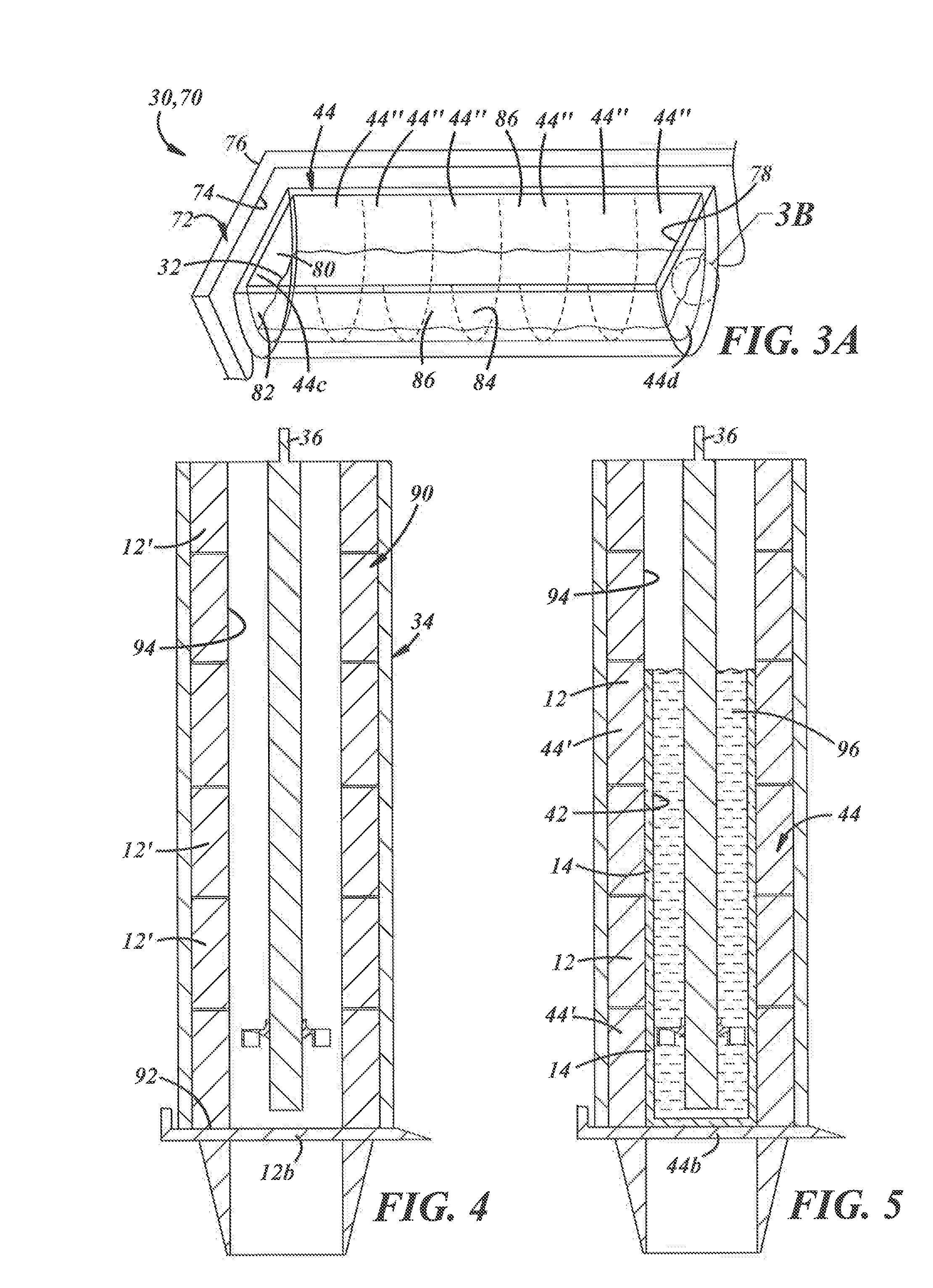Nanocomposite Material
- Summary
- Abstract
- Description
- Claims
- Application Information
AI Technical Summary
Benefits of technology
Problems solved by technology
Method used
Image
Examples
Embodiment Construction
[0017]A nanocomposite material 10 that can withstand extended contact with molten glass and glass precursor melts (hereafter collectively referred to as “molten glass substances”) is shown generally in FIG. 1. The nanocomposite material 10 may be used to construct any type of structure—such as an impeller or a protective liner for making and containing molten glass substances inside a vessel—that may come into contact with molten glass substances for any length of time. In terms of its compositional make-up, the nanocomposite material 10 comprises a cermet substrate 12 and a glass reaction material 14 that overlies the cermet substrate 12 so that it confronts and contacts the hot molten glass substances. The cermet substrate 12 and the glass reaction material 14 cooperatively impart a degree of corrosion, erosion, and heat resistance to the nanocomposite material 10 that is attractive to glass article manufacturers.
[0018]The cermet substrate 12 includes a refractory metal matrix 16 ...
PUM
| Property | Measurement | Unit |
|---|---|---|
| Perimeter | aaaaa | aaaaa |
| Refractory | aaaaa | aaaaa |
Abstract
Description
Claims
Application Information
 Login to View More
Login to View More - R&D
- Intellectual Property
- Life Sciences
- Materials
- Tech Scout
- Unparalleled Data Quality
- Higher Quality Content
- 60% Fewer Hallucinations
Browse by: Latest US Patents, China's latest patents, Technical Efficacy Thesaurus, Application Domain, Technology Topic, Popular Technical Reports.
© 2025 PatSnap. All rights reserved.Legal|Privacy policy|Modern Slavery Act Transparency Statement|Sitemap|About US| Contact US: help@patsnap.com



